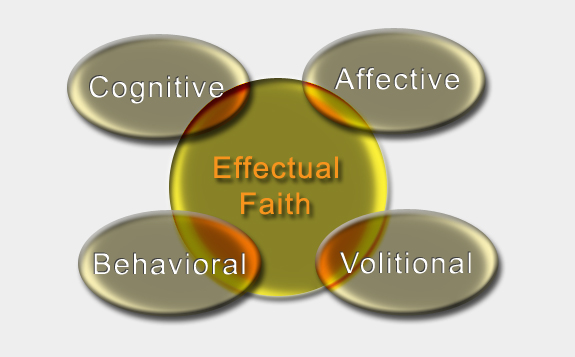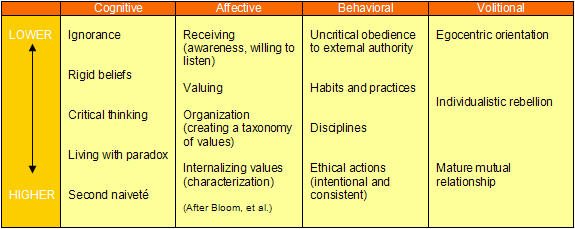In a recent post Marty identified the “domains of effectual faith” found in a couple of my books (The Craft of Christian Teaching and in How to Be The Best Christian Small Group Leader). Marty’s treatment was accurate, and the schema is very helpful for addressing educational issues from curriculum design to lesson planning. These domains are more subtle and dynamic than we usually get into when introducing the concept of Effectual Faitih in workshops. The risk there is in leaving people with simplistic or one-dimensional misunderstandings about this schema on the nature of faith.

The four domains of Effectual Faith are distinct but interrelated. The framing concept is “to the extent that each domain is operative is the extent to which someone can be said to have effectual faith.” Matters of faith are not quantitative—the issue of “how much” faith one has is moot and is a “wrong question.” Jesus said as much when he corrected his disciples by saying that if it were a matter of “how much” faith, a mustard seed’s worth would move mountains. The domains are qualitative in nature. Here are examples of the range of qualities for each domain. The qualities on the chart are merely for illustration. A variety of qualitative stages for each category can be found in various writings on faith and psycho-social development.

Faith is never static; it is a verb, not a noun, as Kenneth Stokes pointed out. And while there are four distinct domains they do not exist in a vacuum and are subject to the dynamics of growth and maturation. One goal of Christian education is to help guide the learner from a naive and immature faith to a critical and mature faith. The identification of the progressive stages within each stage can be helpful in assessing the growth needs of the learner and in formulating learning and programmatic objectives to help learners grow in faith maturity.
Flesh out your own schema for each domain of Effectual Faith. Consider what source(s) you’ll use to create your taxonomies. In what ways can you apply this framework in assessing your congregational Christian education program. Can the schema help inform how you go about planning and designing educational opportunities for your learners?


Pingback: My Journey with Harry | G.R.A.C.E. Writes